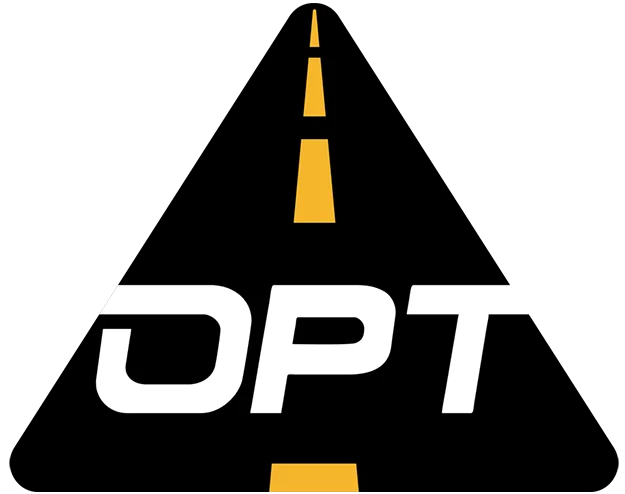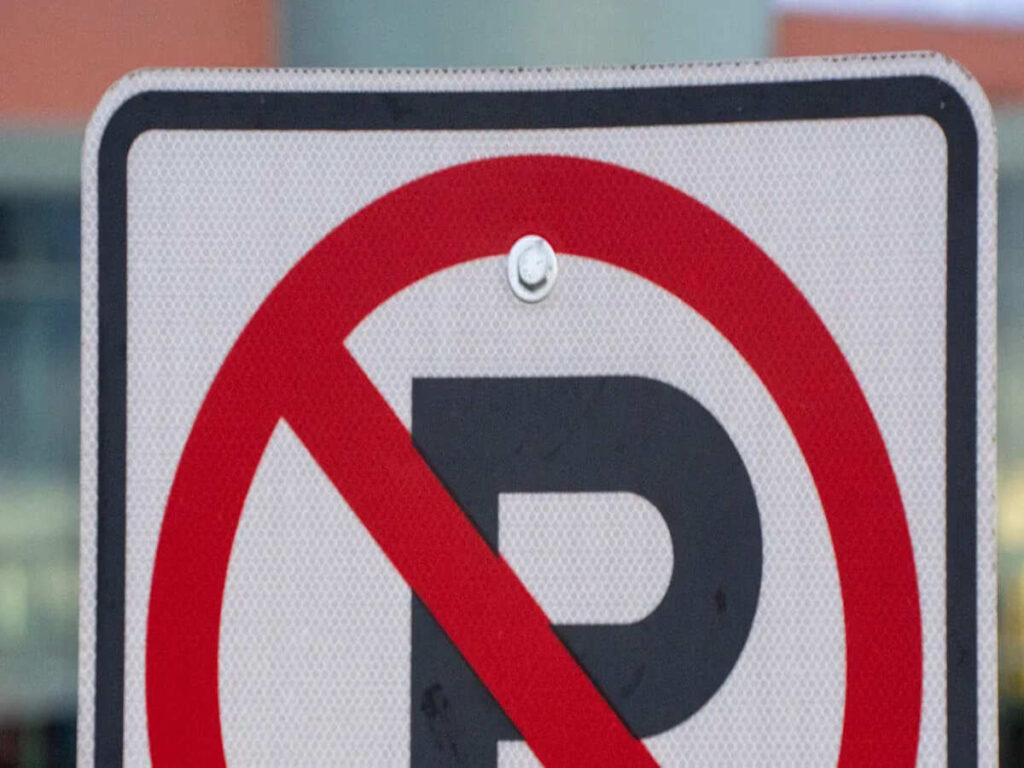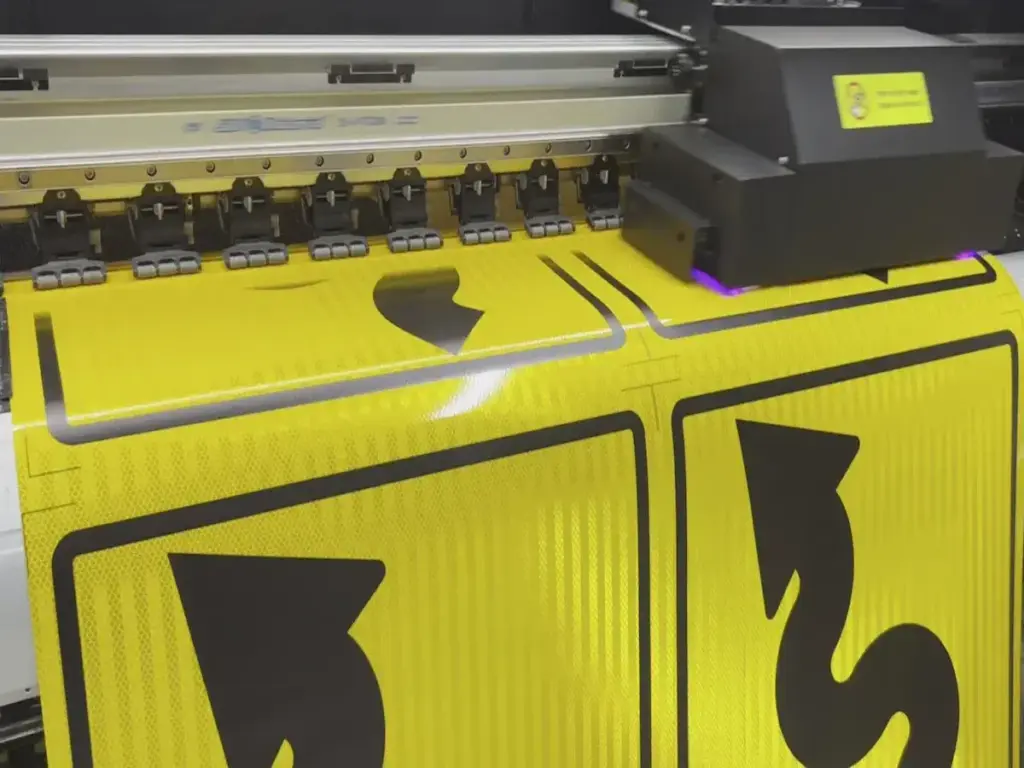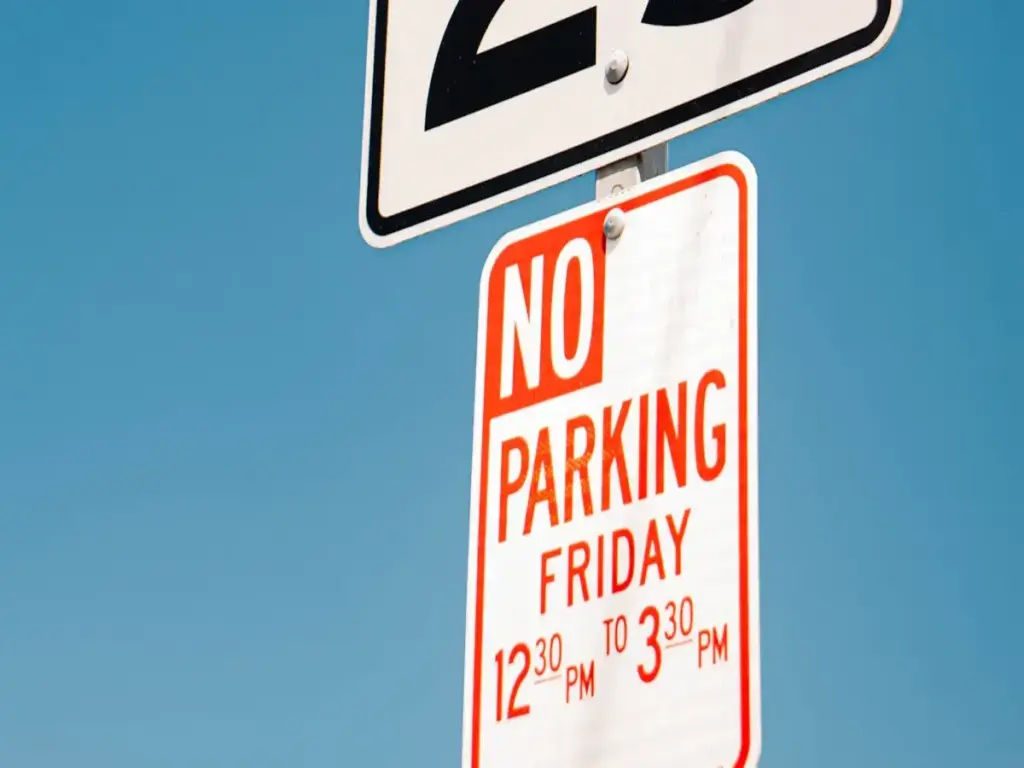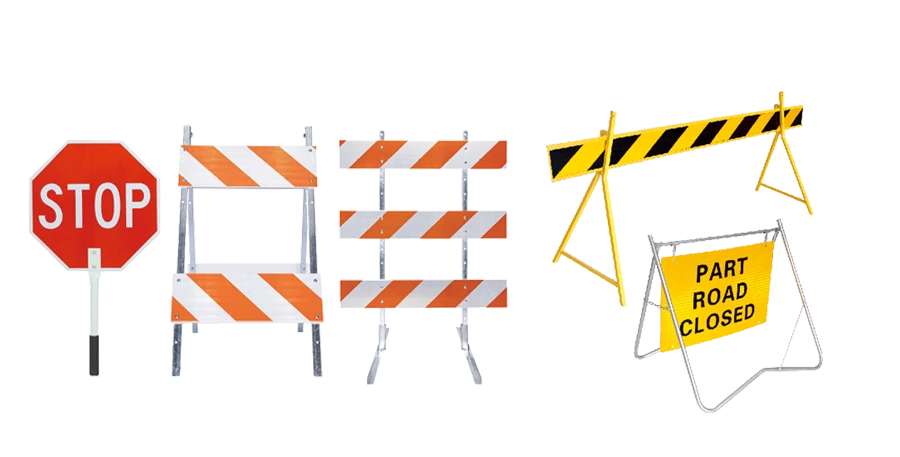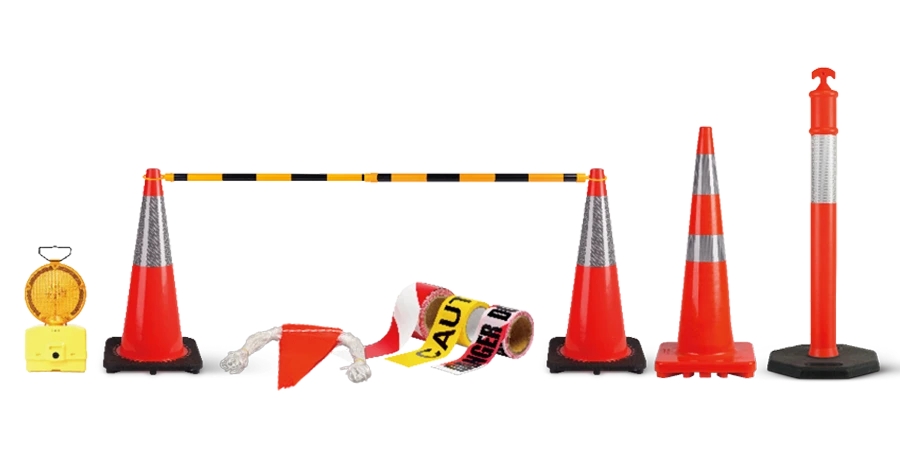
La comunicación clara es esencial para la seguridad en el lugar de trabajo, y Señales de seguridad OSHAdesempeñan un papel crucial para lograrlo. Estas señales de seguridad de OSHA alertan a los trabajadores sobre peligros potenciales e indican la ubicación del equipo de seguridad.. También aseguran el cumplimiento de la normativa OSHA.. El uso adecuado de las señales de seguridad de OSHA no solo protege a los trabajadores sino que también ayuda a las empresas a evitar costosas multas.. Para maximizar la seguridad, Asegúrese de que las señales de seguridad de OSHA sean muy visibles., preciso, y colocados en lugares apropiados. Comprender y seguir estas pautas contribuye a un entorno de trabajo más seguro para todos..
OPTRAFFIC ofrece a la venta una amplia gama de señales de seguridad OSHA de alta calidad diseñado para mejorar la seguridad en el lugar de trabajo y garantizar el cumplimiento. Optraffic duradero, Las señales de seguridad claras a la venta están diseñadas para cumplir con las normas de seguridad., ayudarle a mantener un entorno de trabajo seguro y eficiente.
Contáctenos hoy para explorar nuestra colección completa de soluciones de señalización de seguridad.
Control de llave
- Las señales de seguridad de OSHA ayudan a advertir a los trabajadores sobre los peligros y seguir las reglas.
- Utilice señales de peligro rojas para grandes riesgos., señales de precaución amarillas para riesgos menores, y señales de advertencia naranjas para riesgos medios.
- Coloque carteles donde las personas puedan verlos fácilmente y al nivel de los ojos para mantener a todos seguros..
- Revise las señales con frecuencia para asegurarse de que estén claras., Fácil de leer, y en buen estado para evitar accidentes.
- Compre letreros de OSHA de vendedores confiables para cumplir con las reglas de seguridad y evitar multas.
Señales requeridas por OSHA: Categorías clave y ejemplos
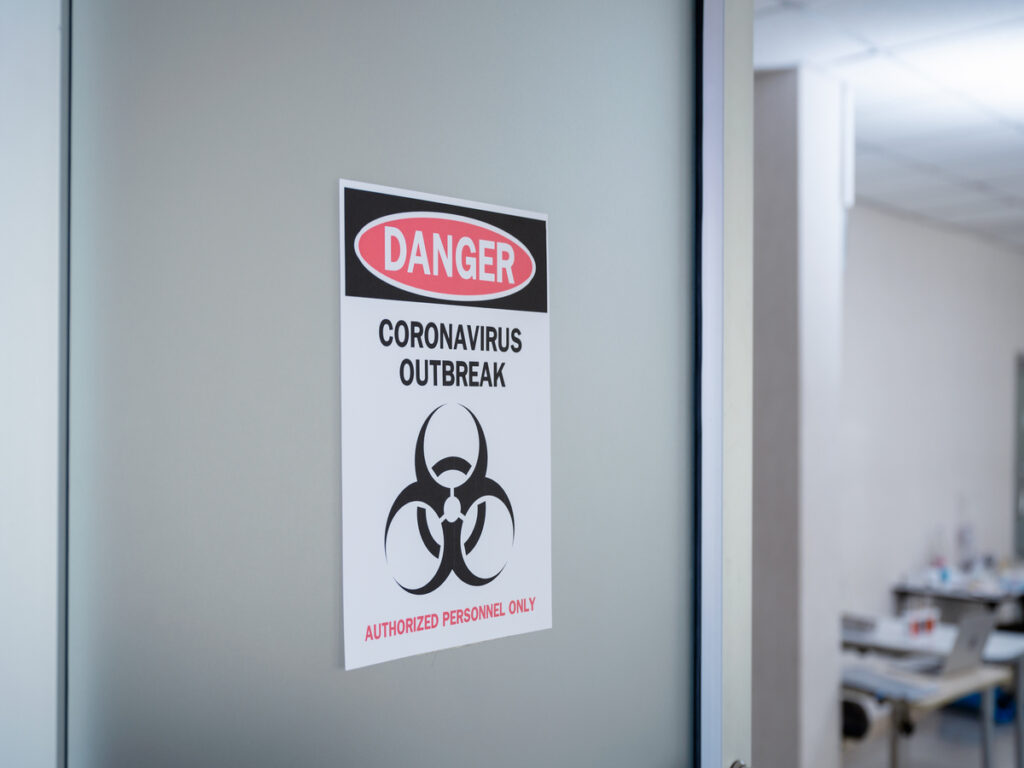
Señales de peligro
Las señales de peligro advierten a los trabajadores sobre peligros graves que podrían causar la muerte o lesiones graves.. Las reglas de OSHA dicen que estos letreros deben tener la palabra “PELIGRO” en negrita con fondo rojo para destacar. Estas señales deben colocarse donde existan riesgos mortales., como áreas con electricidad de alto voltaje o productos químicos almacenados.
- Estas señales y símbolos de seguridad de OSHA ayudan a prevenir lesiones y muertes en el lugar de trabajo.
- Las señales de seguridad de OSHA recuerdan a los trabajadores que deben mantenerse alerta en áreas de riesgo.
Por ejemplo, Una señal de peligro cerca de un panel eléctrico advierte a los trabajadores que se mantengan alejados., evitando descargas o electrocución. Seguir las reglas de OSHA mantiene seguros a los trabajadores y garantiza que las empresas cumplan con los requisitos de seguridad.
Señales de precaución
Las señales de precaución advierten sobre peligros menos graves, pero aún necesitan atención. Estas señales de seguridad de OSHA tienen un fondo amarillo con texto negro para llamar la atención sin causar pánico.. OSHA dice que se deben usar señales de precaución donde puedan ocurrir pequeñas lesiones, como en pisos mojados o lugares resbaladizos.
| Estadística | Descripción |
|---|---|
| Violación de OSHA | No seguir las reglas de comunicación de peligros es el #2 violación en el lugar de trabajo. |
| Accidentes no fatales | Alrededor 2.8 Millones de lesiones laborales no fatales ocurren anualmente en los EE. UU., Muchos se pueden prevenir con los signos adecuados.. |
Poner señales de precaución en lugares de riesgo ayuda a evitar accidentes. Por ejemplo, a “Precaución: Piso húmedo” Un cartel en un pasillo advierte a los trabajadores que caminen con cuidado., evitando resbalones. El uso de señales de precaución aprobadas por OSHA hace que los lugares de trabajo sean más seguros y reduce los riesgos de accidentes.
Señales de advertencia
Las señales de advertencia se utilizan para peligros que no son tan graves como las señales de peligro pero sí más graves que las señales de precaución.. Estas señales de advertencia de OSHA muestran riesgos que podrían causar lesiones graves si se ignoran. OSHA exige que las señales de advertencia de OSHA tengan un fondo naranja con texto negro para que sean fáciles de ver.
| Métrico | Descripción |
|---|---|
| Reducción de Accidentes | Las señales de seguridad ayudan a reducir las lesiones y accidentes en el lugar de trabajo. |
| Cumplimiento de OSHA | Las señales correctas garantizan que las empresas sigan las reglas de seguridad de OSHA. |
| Educación sobre riesgos | Los carteles enseñan a los trabajadores sobre los peligros que podrían enfrentar. |
Por ejemplo, Una señal de advertencia de OSHA cerca de un sitio de construcción informa a los trabajadores sobre vehículos en movimiento o máquinas pesadas. Estas señales de advertencia de OSHA enseñan a los trabajadores sobre los riesgos y fomentan un comportamiento cuidadoso, ayudando a las empresas a seguir las reglas de OSHA.
Señales de aviso
Las señales de aviso son importantes para mantener seguros los lugares de trabajo. comparten reglas, instrucciones, o procedimientos que los trabajadores necesitan saber. Estos carteles de aviso no advierten sobre peligros, pero brindan detalles útiles. OSHA dice que los letreros de aviso deben tener una parte superior azul con letras blancas. Esto hace que sean fáciles de distinguir de otras señales de seguridad..
Encontrará señales de aviso donde se necesitan o prohíben ciertas acciones.. Por ejemplo, a “No Fumar” firmar en un área para no fumadores mantiene las reglas claras. A “PPE requerido más allá de este punto” El signo recuerda a los trabajadores que usen equipo de seguridad. Estos carteles de aviso apoyan las reglas de seguridad y ayudan a prevenir accidentes..
Expertos como Diana Stegall dicen que las señales de seguridad son clave para compartir información sobre peligros. Brian McFadden destaca que las señales deben ser claras y útiles. OSHA informa que la mala comunicación de peligros es uno de los principales problemas en el lugar de trabajo. Con aproximadamente 2.8 millones de lesiones laborales no fatales cada año en los EE. UU., buenas señales pueden detener muchos de estos accidentes.
Seguir las reglas de OSHA, Coloque carteles de aviso donde los trabajadores puedan verlos fácilmente.. Asegúrese de que las palabras sean simples y fáciles de leer.. Mantenga los carteles de aviso libres de cualquier cosa que bloquee la vista.. Haciendo esto, usted puede hacer que su lugar de trabajo sea más seguro y organizado.
Señales de seguridad de OSHA: Situaciones específicas & Requisitos de la industria
Sitios de construcción
Las obras de construcción son lugares muy peligrosos para trabajar. Señales de seguridad OSHA son necesarios para mantener seguros a los trabajadores. Estas señales de construcción advierten sobre peligros como caídas, maquinas grandes, o materiales nocivos. OSHA Las reglas dicen que las señales deben ser claras y fáciles de ver.. Esto ayuda a reducir los accidentes y seguir las leyes de seguridad..
Sabías? Las caídas son la cima. OSHA problema en sitios de construcción. Encima 6,000 Las infracciones por caídas ocurren todos los años..
| Tipo de violación | Número de violaciones |
|---|---|
| Protección contra caídas: requisitos generales | 6,307 |
| Comunicación de peligros | 2,888 |
| escaleras | 2,573 |
| Protección respiratoria | 2,470 |
| Bloqueo/etiquetado | 2,443 |
Las señales de seguridad ayudan a prevenir estos problemas.. Por ejemplo, “Peligro: Alto voltaje” Señales cerca de paneles eléctricos advierten a los trabajadores.. “Precaución: Objetos que caen” Los carteles cerca de los andamios recuerdan a los trabajadores que deben mantenerse alerta.. Usando OSHA Las señales hacen que el lugar de trabajo sea más seguro y reducen los riesgos de lesiones..
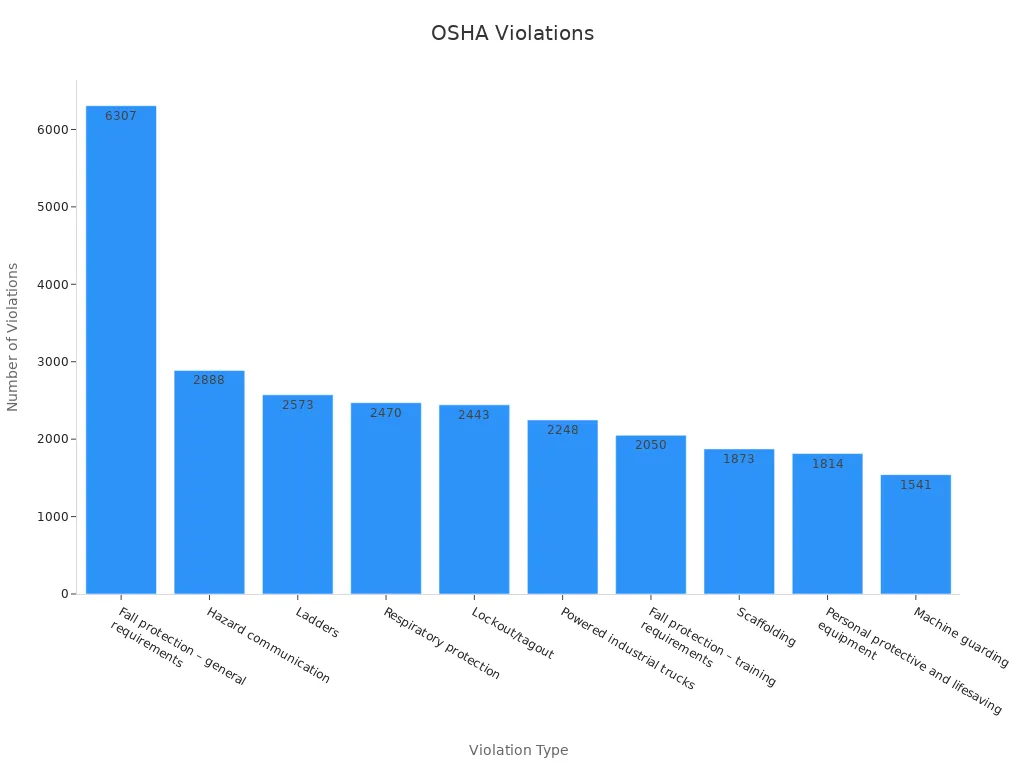
Almacenes e Instalaciones Industriales
Los almacenes y fábricas tienen peligros especiales como las carretillas elevadoras., maquinas grandes, y productos químicos. OSHA dice que las señales de seguridad deben advertir a los trabajadores y promover hábitos seguros.
| Tipo de signo | Descripción |
|---|---|
| Señales de peligro | Muestra un peligro grave que necesita cuidados adicionales.; usar rojo, negro, o blanco. |
| Señales de precaución | Advertir sobre posibles riesgos; usa amarillo con letras negras. |
| Señales de instrucción de seguridad | dar consejos de seguridad; use blanco con paneles verdes y letras negras. |
Por ejemplo, “Precaución: Zona de operación de montacargas” señales advierten sobre vehículos en movimiento. “Peligro: Materiales inflamables” Las señales cerca de productos químicos detienen los accidentes.. Colocar correctamente estos letreros de OSHA sigue OSHA reglas y mantiene a los trabajadores seguros.
Oficinas y Edificios Comerciales
Las oficinas y tiendas también necesitan OSHA letreros de seguridad. Salidas de emergencia, rutas de escape, y los lugares de primeros auxilios deben estar claramente marcados.
| Métrico | Descripción |
|---|---|
| Tasa de incidentes total registrable (Tres) | Cuenta todos los incidentes registrables por 100 trabajadores. |
| Días de distancia, Restringido, o transferido (DARDO) Tasa | Realiza un seguimiento de los casos en los que los trabajadores faltan al trabajo o tienen tareas limitadas. |
| Tasa de frecuencia de incidentes con tiempo perdido (Ltifr) | Mide los incidentes con pérdida de tiempo por millón de horas trabajadas. |
Por ejemplo, “Salida” Las señales ayudan a los trabajadores a salir de forma segura durante las emergencias.. “Estación de primeros auxilios” Las señales muestran dónde encontrar ayuda médica rápidamente.. Siguiente OSHA firmar reglas en las oficinas protege a los trabajadores y reduce la tasa de accidentes, Hacer los lugares de trabajo más seguros.
Reglas de OSHA para la colocación y visibilidad de letreros
Dónde colocar señales
Es muy importante colocar señales de seguridad en los lugares correctos.. Los trabajadores necesitan ver los peligros antes de acercarse demasiado. OSHA dice que las señales deben colocarse donde sean fáciles de ver y coincidan con el peligro cercano. Por ejemplo, a “Alto voltaje” El letrero debe estar justo al lado del panel eléctrico., no muy lejos donde podría perderse.
Seguir las reglas de OSHA, Coloque carteles a la altura de los ojos cuando pueda.. Esto los hace más fáciles de notar y leer rápidamente.. No coloque letreros de OSHA donde puedan quedar bloqueados por muebles., herramientas, u otros artículos. Los trabajadores siempre deben tener una visión clara de las señales., incluso cuando el lugar de trabajo está ocupado.
| Regla | Lo que significa |
|---|---|
| Colocación | Coloque señales donde los trabajadores puedan ver los peligros antes de acercarse.. |
| Visibilidad | Asegúrese de que las señales permanezcan visibles mientras se realiza el trabajo.. |
Poniendo carteles en los lugares correctos, usted puede hacer que el lugar de trabajo sea más seguro y ayudar a detener los accidentes.
Hacer que los letreros sean fáciles de ver
Las señales deben ser fáciles de detectar para que funcionen bien. OSHA dice que los trabajadores deberían poder leer las señales de OSHA desde al menos cinco pies de distancia. Si el peligro está más lejos, El letrero de OSHA debería ser más grande para que los trabajadores aún puedan verlo.. Esto les da tiempo para darse cuenta y evitar el peligro..
En zonas oscuras, OSHA dice que los letreros de OSHA deben tener luces o brillar para seguir siendo legibles. Por ejemplo, Las señales de salida en los almacenes deben iluminarse para que los trabajadores puedan verlas durante los cortes de energía..
- Las señales de seguridad advierten sobre peligros y ayudan a prevenir lesiones..
- Muchos accidentes podrían evitarse con señales de seguridad claras.
| Regla | Lo que significa |
|---|---|
| Visibilidad | Las señales deben ser claras y legibles para mantener seguros a los trabajadores.. |
| Iluminación | Los letreros necesitan luces si el área está demasiado oscura para verlos.. |
Asegurándose de que las señales de OSHA sean fáciles de ver, usted puede mejorar la seguridad y seguir las reglas de OSHA.
Reglas de señalización de OSHA que comúnmente se pasan por alto
Peligros a corto plazo
Los peligros a corto plazo ocurren durante las reparaciones., mantenimiento, o obras de construcción. Estos riesgos incluyen pisos mojados., químicos almacenados, o equipo roto. OSHA dice que las señales claras de OSHA deben advertir a los trabajadores sobre estos peligros. Por ejemplo, a “Precaución: Piso húmedo” señal detiene resbalones y caídas. A “Peligro: Almacenamiento temporal de productos químicos” El cartel mantiene a los trabajadores alejados de lugares de riesgo..
Coloque señales de peligro temporales tan pronto como comience el peligro.. Manténgalos visibles hasta que se solucione el problema.. OSHA también sugiere utilizar materiales resistentes para estos letreros para que duren. El uso de señales adecuadas para peligros a corto plazo reduce los accidentes y sigue las reglas de OSHA..
Señales para la seguridad y capacitación de los empleados
Las señales de seguridad y formación son muy importantes en el trabajo. Estas señales de seguridad muestran salidas de emergencia., puntos de equipo de seguridad, y que hacer en caso de emergencia. OSHA dice que estos letreros de OSHA deben ser fáciles de encontrar para que los trabajadores puedan usarlos cuando sea necesario.
Los programas de capacitación utilizan estas señales para enseñar pasos de seguridad. Por ejemplo, La capacitación en emergencias ayuda a los trabajadores a detectar peligros y actuar rápidamente.. Las señales de seguridad recuerdan a los trabajadores sobre los riesgos y ayudan a evitar lesiones. Los letreros para informar problemas también alientan a los trabajadores a compartir temas inseguros.. Solucionar estos problemas previene futuros accidentes.
Para cumplir con las reglas de OSHA, Coloque estos carteles por donde pasan los trabajadores con frecuencia.. Utilice palabras sencillas e imágenes claras para que todos entiendan.. Centrándose en las señales de seguridad y formación., usted hace que el lugar de trabajo sea más seguro e inteligente.
Sanciones y riesgos de no seguir las reglas de señalización de OSHA
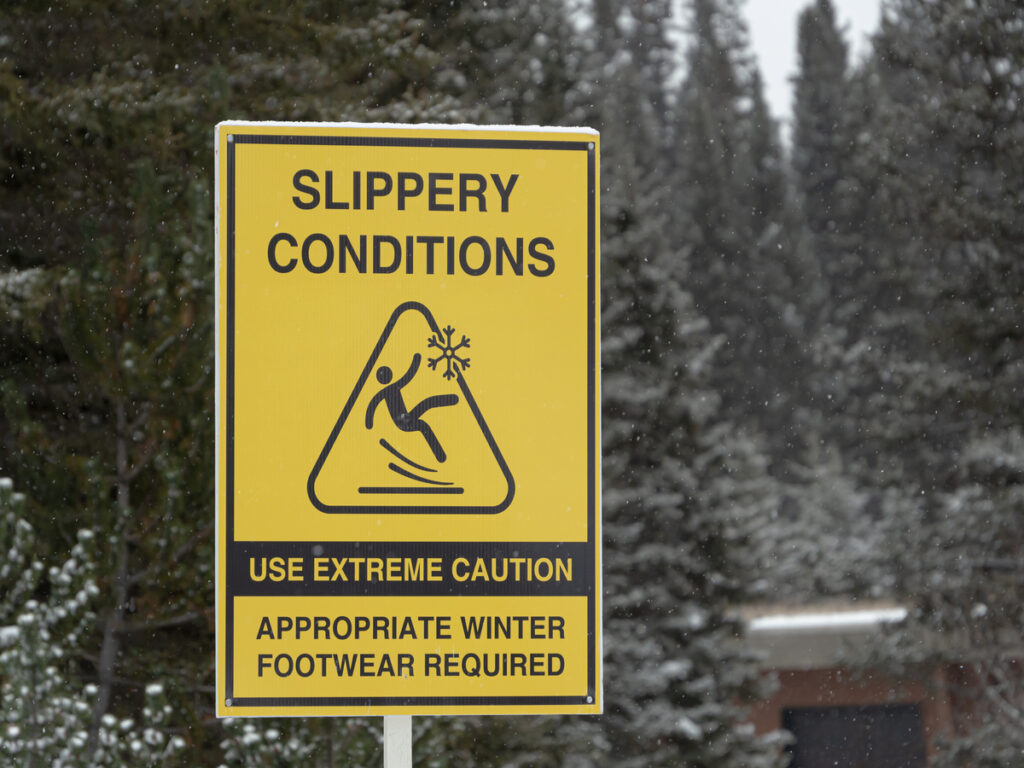
Violaciones de OSHA y posibles multas
No seguir las reglas de señalización de OSHA puede causar grandes problemas. OSHA impone multas estrictas para mantener seguros a los trabajadores y garantizar que se sigan las reglas. Estas multas han aumentado recientemente debido a cambios en los costos.. Por ejemplo:
- Las infracciones graves ahora cuestan hasta $15,625 en 2023.
- Las violaciones repetidas o deliberadas pueden costar tanto como $156,259.
Nuevas reglas a partir de marzo. 2023 centrarse en imponer sanciones más estrictas. Las empresas pueden enfrentar multas mayores si ignoran las reglas de OSHA. “Grave” Las infracciones significan que existe un alto riesgo de muerte o lesiones graves.. Las multas para estos van desde $6,696 a $15,625, dependiendo de qué tan grave sea el problema. Violaciones intencionadas, el peor tipo, puede costar $156,259. Si un trabajador muere, también pueden ocurrir cargos criminales.
Ignorar las reglas de OSHA pone a los trabajadores en peligro y perjudica a su negocio. Seguir las reglas de señalización de OSHA ayuda a evitar estas costosas multas y mantiene a todos seguros.
Ejemplos de la vida real de romper reglas
Historias de la vida real muestran por qué las reglas de OSHA son tan importantes. En 2022, OSHA vio más violaciones repetidas, surgiendo de 1,789 en 2021 a 2,065. Esto muestra que OSHA está tomando medidas enérgicas contra las empresas que no corrigen los errores del pasado..
Por ejemplo, una fábrica consiguió un $100,000 multa por no usar carteles cerca de productos químicos peligrosos. Los trabajadores estuvieron expuestos a sustancias nocivas sin previo aviso. En otro caso, una empresa constructora fue multada $150,000 por no aguantar “Peligro: Objetos que caen” señales cerca de andamios. Un trabajador resultó herido por este error, mostrando cuán importantes son los signos claros.
Estas historias muestran cómo violar las reglas de OSHA puede generar grandes multas y lesiones a los trabajadores.. Siguiendo las reglas de OSHA, puedes proteger a los trabajadores y evitar estos problemas.
Lista de verificación práctica: Mantener bajo control las señales de seguridad de OSHA en el trabajo
Lista de verificación sencilla de cumplimiento de señales de OSHA
Seguir las reglas de señalización de OSHA comienza con una simple lista de verificación. Esto ayuda a encontrar y reparar señales de seguridad incorrectas o faltantes.. A continuación se muestra una lista de verificación útil para guiarlo.:
| Tipo de signo | Lo que significa |
|---|---|
| Señales de peligro | Muestra un peligro que podría causar la muerte o daños graves.. |
| Señales de advertencia | Muestra un peligro que podría causar daño pero es menos grave.. |
| Señales de precaución | Muestra un peligro que podría causar lesiones pequeñas o moderadas.. |
| Señales de instrucción de seguridad | Da consejos de seguridad que no implican riesgos directos para los trabajadores.. |
| Señalización multilingüe | Los carteles deben estar en inglés y hablar el idioma principal de los trabajadores.. |
| Señales limpias y mantenidas | Las señales deben estar limpias y en buen estado para funcionar bien.. |
| Información del empleador | Algunos letreros pueden necesitar el nombre del empleador., DIRECCIÓN, y número de teléfono. |
| Capacitación del personal | Los trabajadores deben saber qué significan las señales y cómo utilizarlas.. |
Esta lista de verificación ayuda a garantizar que su lugar de trabajo siga las reglas de señales de seguridad de OSHA. Verificar estos elementos a menudo mantiene seguros a los trabajadores y evita problemas..
Comprobaciones y actualizaciones periódicas
Los controles periódicos son clave para cumplir con las normas de OSHA. Estas comprobaciones ayudan a encontrar problemas., actualizar signos, y corregir cualquier error. He aquí cómo hacerlo:
- Verifique periódicamente para asegurarse de que todas las señales necesarias estén en su lugar..
- Mire alrededor del lugar de trabajo para detectar peligros y confirmar que las señales sean fáciles de ver..
- Mantenga registros de lesiones o enfermedades para ajustar las señales si es necesario..
- Actualizar la documentación para que coincida con las nuevas reglas de OSHA o los cambios de seguridad..
Al seguir estos pasos, puedes evitar problemas y mantener a tu equipo seguro. Actualizar los letreros a menudo garantiza que su lugar de trabajo cumpla con las últimas reglas de OSHA.
Consejo: Enseñe a los trabajadores a comprender las señales de OSHA. Esto aumenta la seguridad y ayuda a seguir mejor las reglas de OSHA..
Cómo obtener señales aprobadas por OSHA
Qué buscar en buenos vendedores de letreros de OSHA
Elegir el vendedor de señales de seguridad adecuado como OPTRAFICO le ayuda a seguir las reglas de OSHA. Los buenos vendedores proporcionan fuertes, señales duraderas que cumplen con los estándares de seguridad. Consulta su historial y céntrate en la seguridad a la hora de elegir..
Sellers should share safety data. This shows how their signs have made workplaces safer. They must also give proof they follow OSHA rules. This ensures their signs meet all needed standards. Look for proof of fixing past problems too. This shows they work to improve and solve issues well.
| Tipo de documento | Por que importa |
|---|---|
| Safety Data | Shows past safety results, helping you trust their products. |
| Proof of OSHA Compliance | Confirms they follow OSHA rules, keeping your workplace safe. |
| Problem Fixing Records | Proves they fix issues and aim to improve, Creación de confianza. |
By picking sellers with these traits, you can trust their signs will help you follow OSHA rules and keep workers safe.
Benefits of Ready-Made OSHA Sign Sets
Ready-made OSHA sign sets make safety easier. These sets include signs for specific places like offices, almacenes, o sitios de construcción. Ahorran tiempo ya que no es necesario comprar carteles uno por uno..
Estos conjuntos también siguen las reglas de OSHA.. Cada señal está hecha para ser clara., fuerte, y fácil de ver. Por ejemplo, Los conjuntos de almacén pueden tener advertencias sobre montacargas., Señales de EPI, y señales de salida. Los juegos de construcción a menudo incluyen advertencias sobre el área del casco y los andamios..
Otro beneficio es ahorrar dinero.. Comprar un juego cuesta menos que comprar carteles por separado. Esto los convierte en una opción inteligente para empresas grandes o pequeñas..
Elegir juegos de letreros OSHA ya preparados le ayuda a ahorrar tiempo, reducir los costos, y mantenga su lugar de trabajo seguro y organizado.
Las señales de seguridad de OSHA son importantes para mantener seguros a los trabajadores. Las señales claras de OSHA ayudan a reducir las lesiones y accidentes en el trabajo. OSHA dice que la mala comunicación de peligros es un problema común. Esto muestra por qué se necesitan buenas señales.. Las señales de seguridad utilizan imágenes y palabras para hacer que los lugares de trabajo sean más seguros. Pueden detener muchos de los 2.8 millones de accidentes no fatales en los EE. UU.. cada año. Revise sus letreros con frecuencia y compre letreros fuertes de vendedores confiables.. Esto mantiene su lugar de trabajo seguro y sigue las reglas de OSHA..
Preguntas frecuentes
¿Qué colores y diseños requiere OSHA para los letreros??
OSHA tiene reglas para colores y diseños de letreros. Las señales de peligro son rojas., las señales de advertencia son naranjas, y las señales de precaución son amarillas. Estos colores ayudan a los trabajadores a detectar los peligros rápidamente. Siga las reglas de OSHA para mantenerse seguro y cumplir con los requisitos.
¿Con qué frecuencia se deben revisar las señales de seguridad de OSHA??
Revise las señales de seguridad de OSHA al menos una vez al mes. Buscar daño, desvanecimiento, o cualquier cosa que los bloquee. Repare o reemplace los letreros ilegibles de inmediato. Los controles periódicos mantienen a los trabajadores seguros y cumplen con las normas en los lugares de trabajo.
¿OSHA requiere letreros en diferentes idiomas??
Sí, OSHA necesita letreros multilingües si no todos los trabajadores hablan inglés. Los carteles deben utilizar los principales idiomas que entienden los trabajadores.. Esto ayuda a todos a mantenerse seguros y evitar accidentes..
¿Pueden los letreros temporales seguir las reglas de OSHA??
Los letreros temporales pueden cumplir con las reglas de OSHA si son claros y fuertes. Úselos para peligros a corto plazo, como reparaciones o trabajos de construcción.. Asegúrese de que coincidan con las reglas de color y diseño de OSHA para proteger a los trabajadores..
¿Qué sucede si se ignoran las reglas de señalización de OSHA??
Violar las reglas de OSHA puede generar grandes multas. Las infracciones graves cuestan hasta $15,625, y los voluntariosos pueden costar $156,259. Ignorar las reglas también corre el riesgo de sufrir lesiones laborales y problemas legales. Seguir las reglas de OSHA mantiene seguros a los trabajadores y las empresas.
